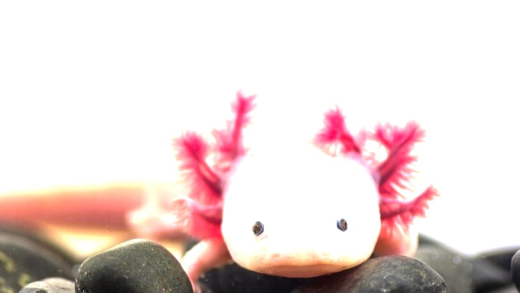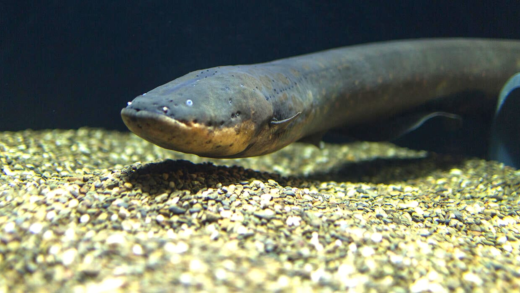Octopus blood is blue due to hemocyanin, which allows efficient oxygen transport in low-oxygen environments. This adaptation benefits octopuses by enhancing their survival in cold waters and enabling quick bursts of movement. Other animals with blue blood, like horseshoe crabs, share similar adaptations for their environments, showcasing the diversity of life and evolutionary solutions.
Octopus Blood: The Basics
Octopus blood is unique due to its striking blue color. This distinctive hue arises from the presence of hemocyanin, a copper-based molecule that effectively transports oxygen in the bloodstream of these fascinating creatures. Unlike iron-based hemoglobin found in human blood, hemocyanin is more efficient in cold and low-oxygen environments, which is essential for the octopus’s survival in the depths of the ocean.
In essence, the blue blood of octopuses allows them to thrive in conditions that would be challenging for many other species. This adaptation is crucial, as it enhances their ability to extract and utilize oxygen, ensuring their survival in the diverse aquatic habitats they occupy.
How Does Octopus Blood Differ from Human Blood?
When comparing octopus blood to human blood, several key differences emerge. Firstly, the color is the most obvious distinction. While human blood is red due to the iron in hemoglobin, octopus blood appears blue due to the copper in hemocyanin. This change in color signals a fundamental difference in how these organisms adapt to their environments.
Another significant difference lies in the oxygen-carrying capacity. Hemocyanin can efficiently bind oxygen even at lower temperatures and pressures, making it particularly advantageous for octopuses living in deep-sea environments. In contrast, human hemoglobin functions best at higher temperatures and oxygen levels, limiting our ability to thrive in similar conditions.
Additionally, octopus blood contains three hearts, which pump blood through their bodies, while humans have only one heart. This anatomical feature further emphasizes the unique adaptations of octopuses and their specialized circulatory systems. In conclusion, the differences between octopus and human blood highlight the diverse evolutionary paths taken by these two species.
What Is Hemocyanin?
Hemocyanin is the protein responsible for the blue color of octopus blood. Unlike hemoglobin, which contains iron and gives human blood its red hue, hemocyanin contains copper. This unique composition allows hemocyanin to bind oxygen more effectively in the cold, low-oxygen environments where octopuses often reside.
In octopus blood, hemocyanin operates as an oxygen carrier, similar to how hemoglobin functions in human blood. When an octopus breathes in water, the hemocyanin molecules capture oxygen and transport it throughout the body. This mechanism is particularly crucial for octopuses, as they inhabit deep-sea environments where oxygen levels can fluctuate dramatically. Hemocyanin’s ability to remain effective under these conditions is vital for their survival.
Moreover, hemocyanin provides some advantages over hemoglobin. For instance, it can carry more oxygen per molecule in certain conditions, enhancing the octopus’s ability to thrive in diverse aquatic habitats. This adaptability not only showcases the fascinating biology of octopuses but also illustrates how different life forms evolve unique solutions to environmental challenges.
Why Do Some Animals Have Blue Blood?
Blue blood is not exclusive to octopuses; several other animals possess this intriguing characteristic. The biological reason behind blue blood in these species often relates to their habitat and lifestyle. For instance, many marine creatures, such as horseshoe crabs and some mollusks, also use hemocyanin for oxygen transport, similar to octopuses.
The reasons for the evolution of blue blood in these animals include:
- Adaptation to Environment: Many blue-blooded animals live in cold or low-oxygen environments. Hemocyanin’s efficiency under these conditions offers a survival advantage.
- Evolutionary Heritage: The presence of hemocyanin can often be traced back to ancient evolutionary lines, indicating that this protein has served as a reliable oxygen transport system for millions of years.
- Physiological Benefits: Hemocyanin can remain effective at lower temperatures and pressures, making it suitable for species that inhabit varying ocean depths.
In summary, the blue blood of octopuses and other similar species highlights the diversity of life and the unique adaptations that enable survival in challenging environments.
Advantages of Blue Blood for Octopuses
Octopus blood is blue because of hemocyanin, which provides several advantages for these creatures. The primary benefit is that it allows octopuses to thrive in low-oxygen environments, such as the deep ocean. This is crucial because octopuses often inhabit areas where oxygen levels can be inconsistent. Their blue blood can transport oxygen more efficiently under these conditions, ensuring that their metabolic needs are met.
Another significant advantage of blue blood is its increased oxygen-carrying capacity in cold waters. In contrast to human blood, which relies on hemoglobin, octopus blood can remain effective even when temperatures drop. This adaptability helps octopuses maintain their energy levels and activity, even in challenging environments.
Additionally, hemocyanin can carry more oxygen per molecule than hemoglobin in certain circumstances. This is particularly beneficial for octopuses as they engage in quick bursts of movement, such as escaping predators. With the ability to quickly access oxygen, octopuses can be more agile and effective hunters in their underwater habitats.
Oxygen Transport Mechanism of Octopus Blood
The unique color of octopus blood plays a vital role in oxygen transport. Hemocyanin, being copper-based, binds oxygen directly from the water through the gills. Once the octopus breathes in water, hemocyanin captures oxygen molecules and distributes them throughout the body. This process allows octopuses to extract and utilize oxygen efficiently, even in low-oxygen conditions.
Moreover, this mechanism is not only effective but also crucial for the survival of octopuses. The ability to adapt to varying oxygen levels means that octopuses can exploit diverse habitats. In some situations, they may need to stay hidden in crevices or hunt in areas with fluctuating oxygen levels, making their efficient oxygen transport system a significant evolutionary advantage.
Other Species with Blue Blood
Octopuses are not alone in having blue blood. Several other species, including horseshoe crabs, some mollusks, and certain species of arachnids, also possess this unique trait. Like octopuses, these animals utilize hemocyanin for oxygen transport, which provides them with similar advantages.
The reasons for blue blood in these species often relate to their habitats. Many of these organisms thrive in cold or low-oxygen environments, where hemocyanin’s effectiveness gives them a survival edge. The evolutionary heritage of hemocyanin can be traced back to ancient marine creatures, suggesting that this oxygen transport system has been crucial for millions of years.
In conclusion, the blue blood of octopuses and other similar species highlights the remarkable adaptations of life forms to their environments. Understanding these advantages not only showcases the fascinating biology of octopuses but also reveals the complex relationships between organisms and their habitats.





Comments are closed.